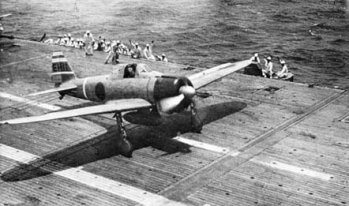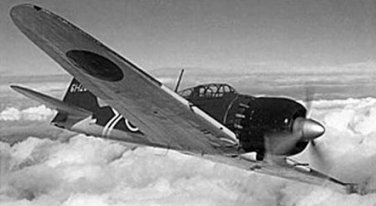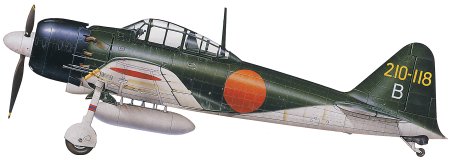
Mitsubishi A6M Zero
When Imperial Japanese forces burst like a tidal wave accross the Pacific in December 1941, they were spearheaded by the amazing Mitsubishi Zero. It was not new even then, but Western experts had shrugged off reports that Japan possessed a world-class warplane. No American fighter matched the Zero in firepower, agility or range and in the early stages of the war it was absolutely dominant.
The notion that Japan could produce a superb combat craft was so alien to the West that ordinary fighters like the Nakajima Ki-43 'Oscar' were mistakenly called 'Zeroes' and overestimated by besieged Americans. Colonel Claire Chennault's 'Flying Tigers' in China never saw a Zero but their combat reports fuelled growing alarm as the Japanese navy swept across the Pacific with squadrons of the real thing: the A6M, designed by Mitsubishi's Jiro Horikoshi.
The early successes of the Zero were due in part to its light weight, power, armament and manoeuvrability - but also partly to its brilliant and courageous pilots, many of whom fell along the way and proved difficult to replace.
The initial success was not to last for long. Within two years, Japan's adversaries developed new warplanes like the hard-hitting Grumman F6F Hellcat, while only minor improvements were made to the Zero. The tide turned, Japan's situation deteriorated and in the end as defeat closed in, this great fighter was reduced to the role of kamikaze - suicide - aircraft.
 |
 |
| The Zero's excellent range and adapptable airframe made it a successful seaplane fighter. It was given the codename 'Rufe'. |
The Zero gained a reputation as an invincible opponent in the first two years of the Pacific war. Very much a 'pilot's aeroplane', it was one of the most agile aircraft ever built. |
|
Mitsubishi A6M Zero (Technical Specification) |
| Role |
Single-seat carrier-based fighter-bomber |
| Manufacturer |
Mitsubishi |
| Maximum Speed |
565 kmh (350 mph) |
| Maximum Range |
1,800 km (1,200 miles) |
| Ceiling |
11,740 meters (38,500 feet) |
Weight
Empty
Maximum Takeoff |
1,876 kg (4,000 lbs)
2,733 kg (6,025 lbs) |
Dimensions
Wingspan
Length
Height
Wing Area |
11.00 meters (36 ft 1 in)
9.12 meters (29 ft 11 in)
3.60 meters (11 ft 6 in)
21.30 square meters (230 sq ft) |
| Engines |
One Nakajima NK1F Sakae 21 radial engine which provides 843-kW (1,130 hp) |
| Armament |
Two 7.7 mm (0.303 cal) machine-guns with 600 rounds above the engine
Two 20 mm (0.79 in) Type 99 cannon with 100 rounds each in the wings
Tw0 60 kg (130 lbs) bombs under wings (suicide mission, one 250 kg/550 lb bomb) |
Photo Gallery
Click here to submit your photo
| Have A Passion For Aircraft? |
Subscribe to our 14 series FREE newsletter
delivered weekly on World War 2 Aircraft factfile... |
| NB:- We hate spam as much as you do, so your email address will NEVER be shared with or sold to anyone else. That's a Guarantee. |
|
|




